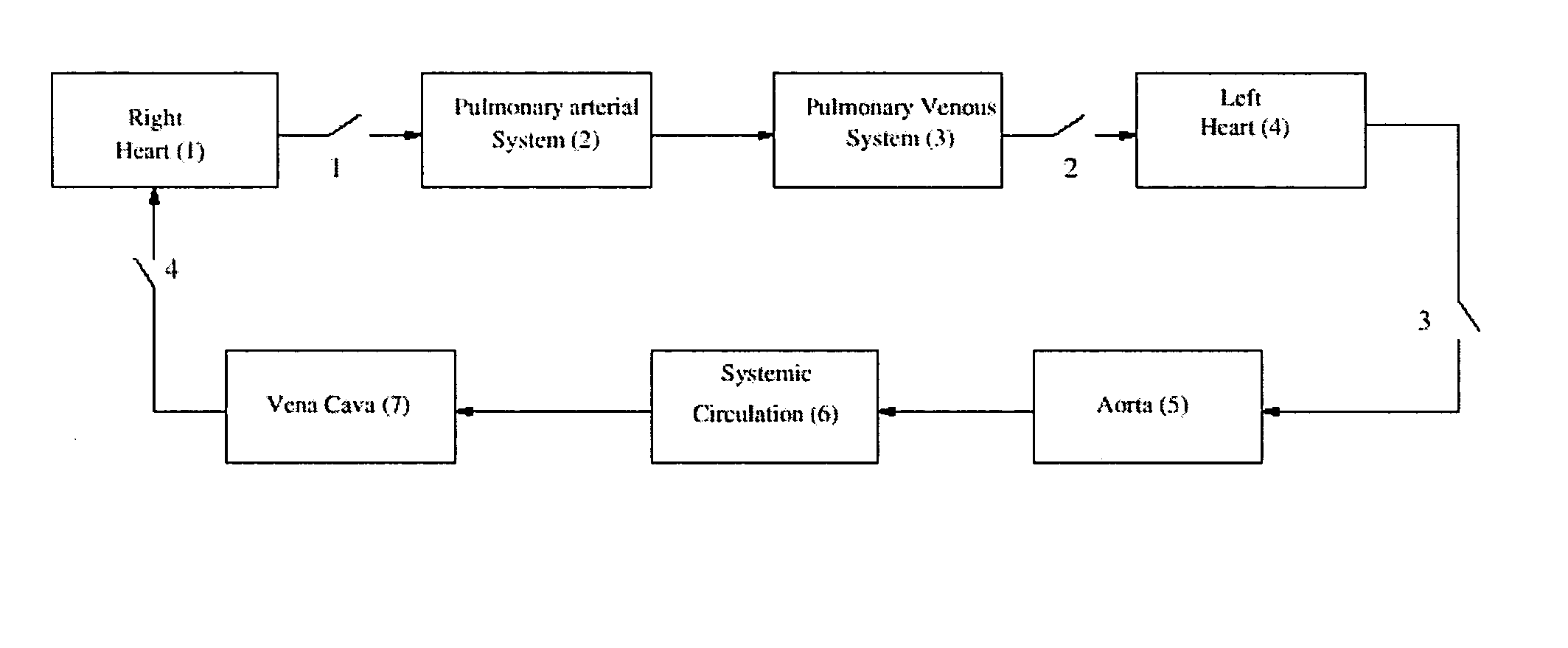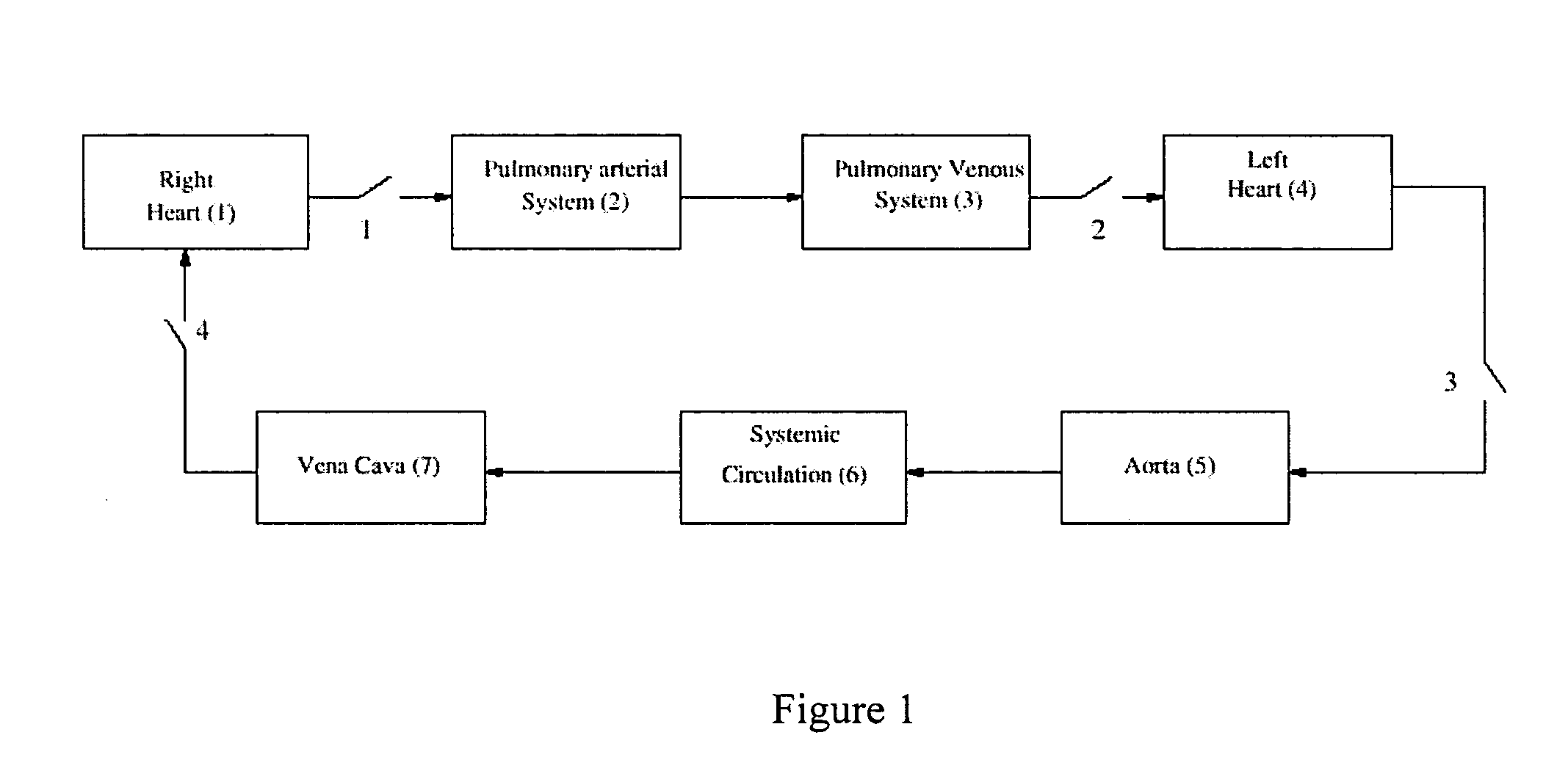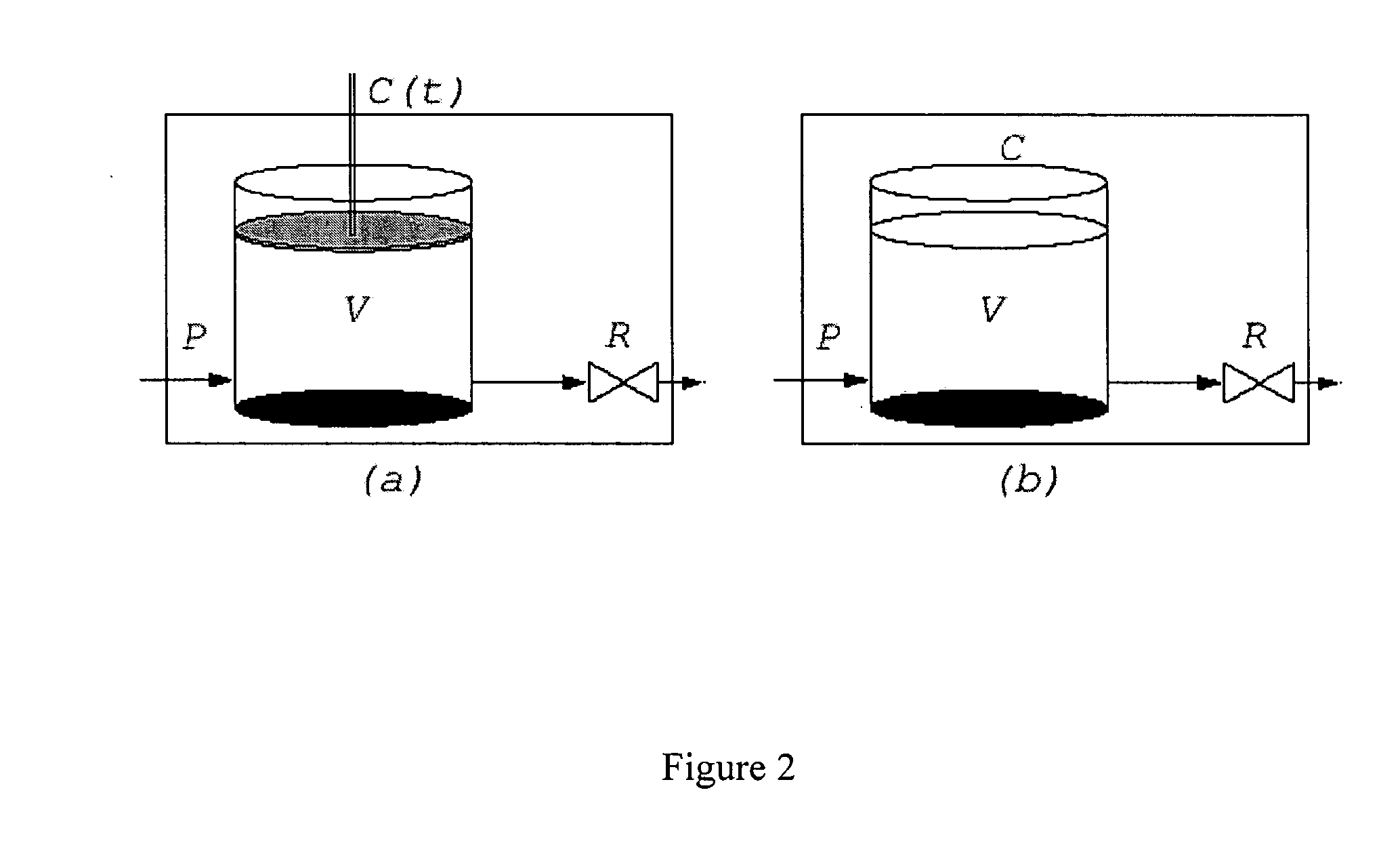Physiologically based control system and method for using the same
a physiologically based control system and controller technology, applied in the field of medical devices, can solve the problems of not being able to provide reliable feedback based on physiological measurements, the control of continuous flow blood pumps cannot be solved, etc., and achieve the effect of preventing suction and minimizing the backflow of body fluids
- Summary
- Abstract
- Description
- Claims
- Application Information
AI Technical Summary
Benefits of technology
Problems solved by technology
Method used
Image
Examples
example 1
[0073] The invented method for physiological control of blood pumps was tested with a LVAD under widely varying physiological conditions. The pulse rate was 60 beats per minute during rest, and 135 bpm during exercise. The LVAD parameters used in the simulation were the same as in Choi et al. “Modeling and Identification of an Axial flow Blood Pump”Proceedings of the 1997 American Control Conference 3714-3715 (June 1997), the disclosure of which is incorporated herein by reference.
[0074] Before t=0, an unassisted perfusion was simulated. At time t=0, arbitrarily selected as the end of the diastole, the LVAD assistance was initiated with the reference differential pressure of 75 mmHg sent to the PI controller, implementing the invention in this example. The initial flow rate and rpm were set to zero, causing a large initial back flow of blood.
[0075] The LVAD and PI controller were first tested assuming healthy heart. FIGS. 12, 13, and 14 show results for the healthy heart with VAD ...
example 2
[0085] An adult mock circulation (consisting of a mock left ventricle, ventricular apical inflow cannulation and mock systemic vasculature with aortic root outflow cannulation) along with a centrifugal flow continuous blood pump (BioMedicus, Medtronic, Eden Prairie, Minn.) were used to test the viability of the ΔPa (maintaining an average pressure difference between the pulmonary vein and aorta) control strategy and compare it to constant rpm and constant pump pressure head (AP) control strategies.
[0086] The adult mock circulation contained an atrium, ventricle, and systemic and coronary vasculature components as illustrated in FIG. 34. Based on a previous study, the adult mock circulation was shown to mimic human normal ventricle, failing ventricle, and partial cardiac recovery physiological responses as defined by characterizing hemodynamic parameters, ventricular pressure-volume relationship, aortic input impedance, and vascular mechanical properties. An artificial atrium, made ...
PUM
 Login to View More
Login to View More Abstract
Description
Claims
Application Information
 Login to View More
Login to View More - R&D
- Intellectual Property
- Life Sciences
- Materials
- Tech Scout
- Unparalleled Data Quality
- Higher Quality Content
- 60% Fewer Hallucinations
Browse by: Latest US Patents, China's latest patents, Technical Efficacy Thesaurus, Application Domain, Technology Topic, Popular Technical Reports.
© 2025 PatSnap. All rights reserved.Legal|Privacy policy|Modern Slavery Act Transparency Statement|Sitemap|About US| Contact US: help@patsnap.com



